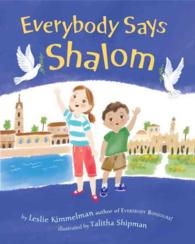Full Description
Creating an orthography is often seen as a key component of language revitalisation. Encoding an endangered variety can enhance its status and prestige. In speech communities that are fragmented dialectally or geographically, a common writing system may help create a sense of unified identity, or help keep a language alive by facilitating teaching and learning. Despite clear advantages, creating an orthography for an endangered language can also bring challenges, and this volume debates the following critical questions: whose task should this be - that of the linguist or the speech community? Should an orthography be maximally distanciated from that of the language of wider communication for ideological reasons, or should its main principles coincide for reasons of learnability? Which local variety should be selected as the basis of a common script? Is a multilectal script preferable to a standardised orthography? And can creating an orthography create problems for existing native speakers?
Contents
1. Introduction Mari C. Jones and Damien Mooney; 2. Who owns vernacular literacy? Assessing the sustainability of written vernaculars Christopher Moseley; 3. Hearing local voices: creating local content participatory approaches in orthography development for non-dominant language communities Mansueto Casquite and Catherine Young; 4. Orthographies 'in the making': the dynamic construction of community-based writing systems among the Náayeru of north-western Mexico Margarita Valdovinos; 5. Community-driven goal centred orthography development: a Tsakhur case study Kathleen D. Sackett; 6. Writing for speaking: the N|uu orthography Sheena Shah and Matthias Brenzinger; 7. Reflections on the Kala Biŋatuwã, a three-year-old alphabet, from Papua New Guinea Christine Schreyer; 8. When letters represent more than sounds: ideology vs practicality in the development of a standard orthography for Ch'orti' Mayan Kerry Hull; 9. The difficult task of finding a standard writing system for the Sioux languages Avelino Corral Esteban; 10. Orthography development in Sardinia: the case of Limba Sarda Comuna Rosangela Lai; 11. Breton orthographies: an increasingly awkward fit Steve Hewitt; 12. Spelling trouble: ideologies and practices in Giernesiei / Dgernesiais / Guernesiais / Guernésiais / Djernezié. . . Julia Sallabank and Yan Marquis; 13. Orthography development on the Internet: Romani on YouTube D. Viktor Leggio and Yaron Matras; 14. Is orthography creation unavoidable for postvernacular languages? Case studies of Rama and Francoprovençal revitalization Bénédicte Pivot and Michel Bert; 15. Changing script in a threatened language: reactions to Romanization at Bantia in the first century BC Katherine McDonald and Nicholas Zair.








